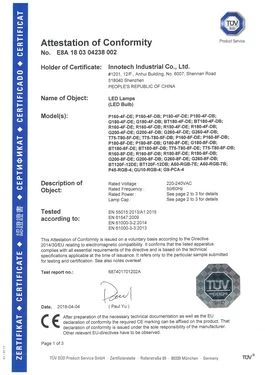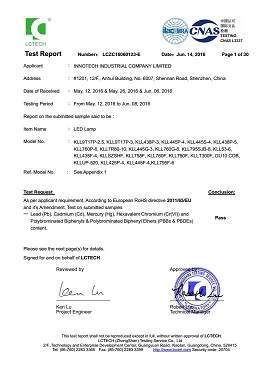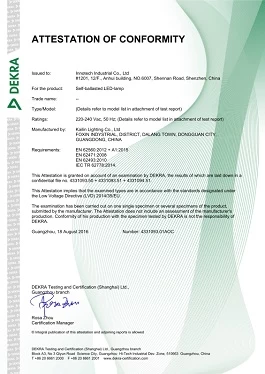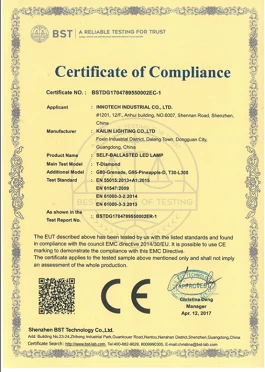Understand the top ten LED lighting quality indicators
Lighting quality refers to whether the lighting source meets the lighting indicators such as visual function, visual comfort, safety and visual beauty. Correct application of lighting quality indicators will bring new feelings to your lighting space, especially in the era of LED lighting, the quality of lighting is extremely important. The use of lighting quality indicators to purchase LED light source products will bring more effort with less effort. Effect, below, we introduce the main indicators of lighting quality.

1, color temperature
It is the light color of white light. The difference between white light color is red or blue. It is expressed by absolute temperature and the unit is K (Kelvin). Generally, the color temperature range of indoor lighting is 2800K-6500K.
Illuminating white light, the most typical is sunlight. It is well known that sunlight is a mixture of light of various colors. Among them, the most important ones are red, green and blue. (The picture on the right is an exploded view of the light passing through the prism, which verifies that the sunlight is a mixture of light of multiple colors.)
White light uses color temperature indicators to describe light color. When there are many blue light components in white light, white light color is blue (cold cold, such as northern winter noon sunshine). When there are many red light components in white light, white light color is partial. Red (warm, such as morning and evening sunlight), color temperature is the only way to express white light color.
The white light of the artificial light source is also formed by the mixing of light of various colors. For artificial light sources, we also describe the light color of white light with color temperature. For the physical analysis of white light, we usually use the method of spectral analysis. The spectral analysis of white light requires specialization. Instrument test production. The figure below is a variety of spectra.

It can be seen from this figure that the spectral composition of sunlight is rich and full. The spectral distribution of incandescent lamps and LED lamps in artificial light sources is better than that of high-pressure sodium lamps and fluorescent lamps. The spectrum of fluorescent lamps contains harmful ultraviolet components, due to incandescent lamps. It consumes a lot of energy and will be eliminated. The LED light source will be the leading product of the illumination source.
When describing white light color, many people use warm white light, natural white light, daylight white light, and cool white light classification. For the quality of illumination, this classification range is too large. Color temperature should be used to describe white light. Usually, LED white color temperature and white light The correspondence between light colors is as shown in the left figure below (slightly described). The international standard color temperature distinction should be based on the CIE1931 chromaticity diagram, as shown in the right image below:
Accurate color temperature values are tested by professional instruments. When purchasing lighting products, describing color temperature is a problem that is bothering. In order to have an intuitive understanding, we have created a color temperature visual legend that visually distinguishes the color temperature of lighting products. As shown below:
2, color rendering
It is the degree of reduction of the color of the surface of the illuminated object by the illumination source. It is represented by the color rendering index Ra. The Ra range is from 0-100. The closer the Ra value is to 100, the higher the color rendering property, and the better the color reduction of the surface of the illuminated object. The color rendering of the light source requires professional instrument testing.
It can be seen from the spectrum of the sun that the solar spectrum is the most abundant, and it is the light source with the best color rendering. The color rendering of artificial light source is always lower than that of sunlight. Therefore, the best way to identify the color rendering of artificial light source is to The easiest way to compare sunlight is to compare the color of the palm or face with sunlight and artificial light. The closer to the color under the sun, the better the color rendering. You can also palm your hand to the light source and see the palm. The color, if the color of the palm of the hand is gray or yellow, the color rendering is not good. If the color of the palm of the hand has blood red, the color rendering is normal (as shown below):

For LED light sources, Ra can be roughly divided into three levels, Ra is less than 69, Ra is between 70 and 79, and Ra is greater than 80. For high-quality indoor lighting, a light source with Ra greater than 80 should be used. The color rendering index and the degree of color reduction can be referred to the visual comparison of the following figure.
China adopts the test standard of CIE. For LED light source, the general color rendering index Ra does not reasonably reflect the color rendering performance of LED illumination source. CIE also does not provide new test standards. For users who are pursuing high color rendering ability, Referring to the Planck curve in the CIE1931 chromaticity diagram (black line in the figure below), the closer the coordinate value of the test is to the light source of the Planck curve, the better the color rendering ability.
3. Illumination value of the light source
The illuminance is the luminous flux that the light source illuminates on the unit area of the object to be illuminated. It is the degree of lightness and darkness of the surface of the illuminated object. It is represented by Lux Lux (Lx). The higher the illuminance value of the illuminated surface, the brighter the object is illuminated.
The illuminance value has a great relationship with the distance from the light source to the object to be illuminated. The farther the distance is, the lower the illuminance value is. The illuminance value is also related to the light distribution curve of the luminaire. The smaller the light output angle of the luminaire, the higher the illuminance value. The higher the light output angle, the lower the illuminance value; the illuminance value requires special instrument testing.
From the photometric point of view, luminous flux is the main indicator. As a lighting product, it mainly reflects the degree of light and darkness of the surface of the irradiated object. The illuminance value is used to describe the lighting effect more accurately. The illumination value of the indoor lighting is high and low, and the reaction is indoor lighting. Bright and dark, too high illumination and too low illumination have an impact on the health of the human eye. Therefore, the illumination value of indoor illumination needs to refer to the national standard (Table 1). The illumination value recommended according to this table does not appear. Excessive or too low illumination.

 +
+



















